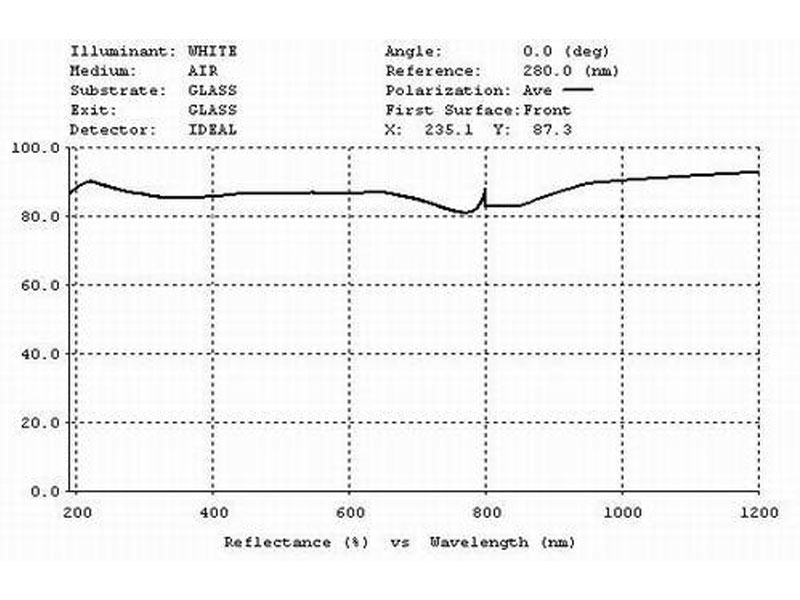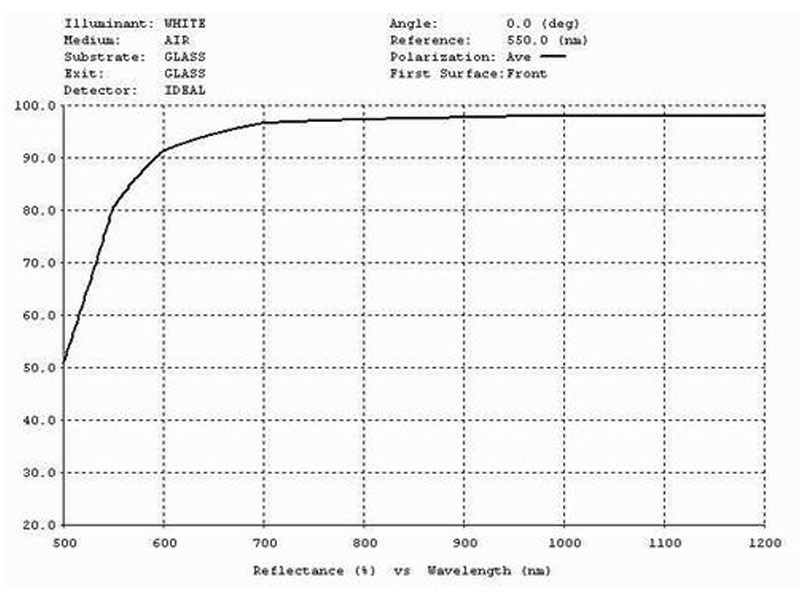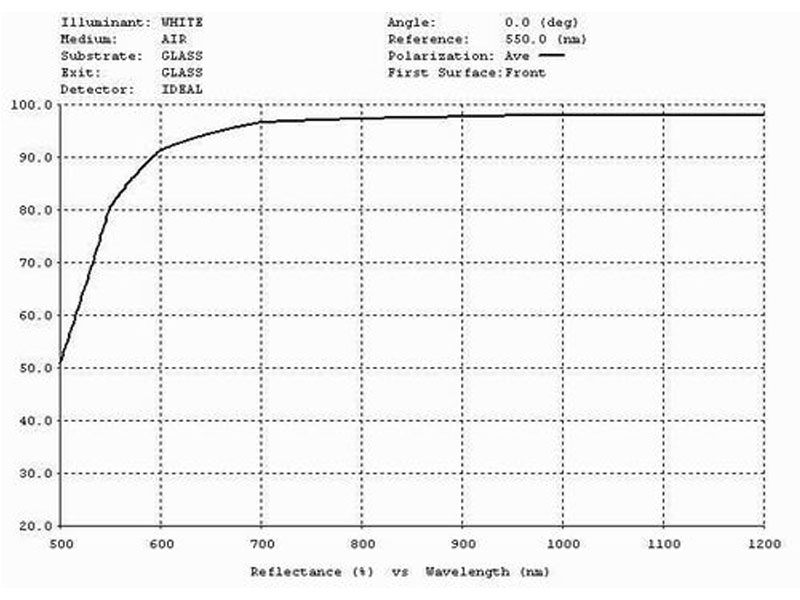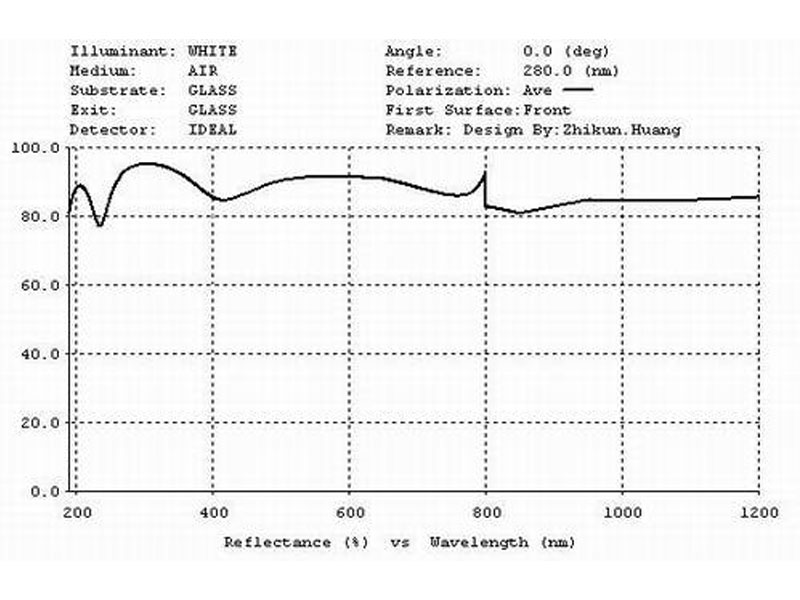The metal reflective coatings have the advantages of high reflectivity and a wide spectral range, and they are typically composed of a single metal layer. The principle of these reflective coatings is based on the reflection of light. When light strikes the metal surface, the incident light is reflected back into the original medium by the metal layer, thereby achieving light reflection. The advantages of these coatings include simple fabrication processes and a wide operational wavelength range. However, they also have the drawback of higher light loss, and the reflectivity cannot be extremely high.
Metal reflective coatings utilize the generally large extinction coefficients of metals. The amplitude of light entering the metal rapidly attenuates, reducing the light energy and correspondingly increasing the reflected light energy. Therefore, metals with large extinction coefficients and stable optical properties are typically chosen as materials for metal reflective coatings, such as aluminum, silver, gold, and copper.
Since these metals are highly prone to oxidation in air, a protective layer is usually added on the outside of the coating. Common protective materials include silicon monoxide (SiO), magnesium fluoride (MgF₂), silicon dioxide (SiO₂), and aluminum oxide (Al₂O₃)




